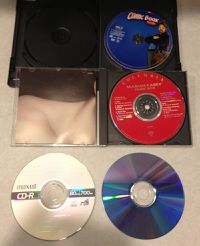Optical Discs
From Just Solve the File Format Problem
(Difference between revisions)
Dan Tobias (Talk | contribs) |
Dan Tobias (Talk | contribs) (→Links) |
||
| Line 42: | Line 42: | ||
* [http://www.sony.net/SonyInfo/News/Press/201403/14-0310E/index.html "Archival Disc" standard formulated for professional-use next-generation optical discs] (up to 1 TB capacity) | * [http://www.sony.net/SonyInfo/News/Press/201403/14-0310E/index.html "Archival Disc" standard formulated for professional-use next-generation optical discs] (up to 1 TB capacity) | ||
* [http://journal.code4lib.org/articles/9581 An Introduction to Optical Media Preservation] by [https://twitter.com/archivetype @archivetype] | * [http://journal.code4lib.org/articles/9581 An Introduction to Optical Media Preservation] by [https://twitter.com/archivetype @archivetype] | ||
| + | * [http://www.loc.gov/preservation/resources/rfs/softgame.html Library of Congress Recommended Format Specifications: Software/Gaming] | ||
Revision as of 01:08, 24 June 2014
An optical disc is read by a laser. They have been used extensively to store and distribute music, movies, and computer programs and data. CD drives became commonplace in personal computers in the mid-1990s, and burners to create CD-ROMs on personal computers were common by the early 2000s. Later, the higher-capacity DVD format became common both for reading and writing as well, and the even newer BluRay format won a "format war" against rival HD-DVD to get some popularity at present, though physical formats in general are on the wane as a distribution format due to the widespread deployment of the high-bandwidth Internet.
- Blu-ray Disc
- CD (Compact Disc)
- DVD
- Enhanced Versatile Disc
- GD-ROM
- HD-DVD
- Laserdisc
- Nintendo optical discs
- Thomson-CSF system
- Ultra Density Optical
- Universal Media Disc
